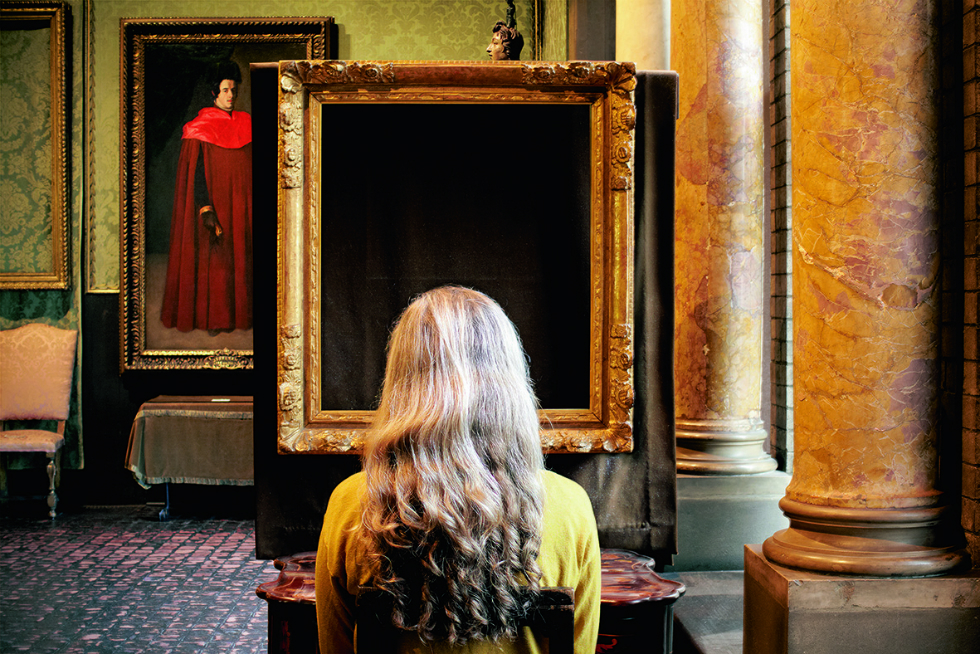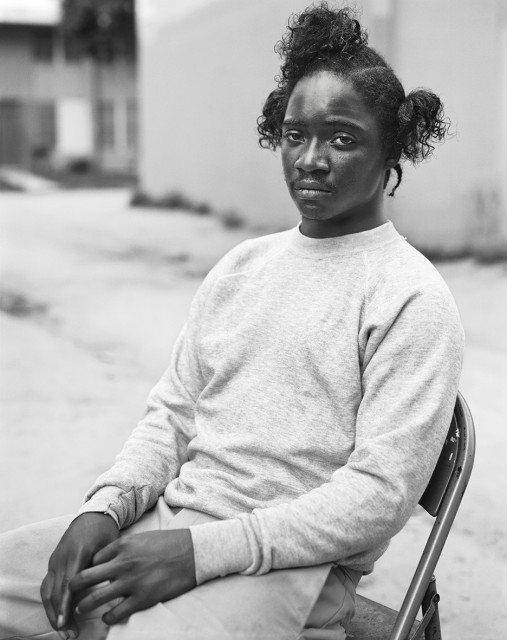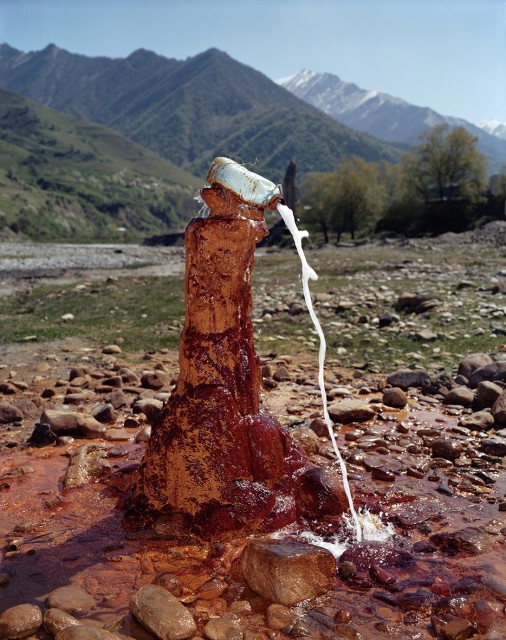“Calle condenses the entirety of her intriguing life down to a pack of cards”: Deutsche Börse Photography Prize — Reviewed

Looking to The Photographers’ Gallery’s annual prize for trends, Jacob Charles Wilson finds that interdisciplinary photography – referencing housing estates, abstract landscapes, ballet dancers and dead cats – is forging the way and keeping the medium vital…
April brings with it the joy of spring and one of my favourite exhibitions of the year, the Deutsche Börse Photography Prize at The Photographers’ Gallery, London. The Prize is not limited by age or awarded for lifetime achievement, but rather for the most significant contribution to the medium – through exhibition or publication – over the past year. Selected by a group of over 100 international photographic figures, the winner is chosen by a new jury each year, ensuring that the medium remains vital. As such, it’s enormously influential in shaping the direction of practitioners and viewers. If you want to know where photography is headed to, it’s worthwhile paying attention to the trends it awards.
The winners of the past three Deutsche Börse Photography Prizes have shown a mix of social documentary and portrait photography. Trevor Paglen’s The Octopus won in 2016; a series of landscapes, surveillance photos, and visualisations of modern military and security features. Mikhael Subotzky and Patrick Waterhouse won the 2015 prize with their social and architectural project Ponte City in Johannesburg; while Richard Mosse’s infrared portraits and landscapes of The Enclave swept away 2014. These three winners show a distinct direction, towards projects that have gone beyond a single genre of photograph. Projects that are interdisciplinary, that introduce an unusual element, and define photography today as more than the combination of lens, film, and shutter.
2017 nominee Dana Lixenberg’s project Imperial Courts presents large black and white prints of empty landscapes, the aftermath of a party, and windswept trees alongside dignified and sympathetic portraits of the black community of the eponymous Imperial Courts housing estate in Watts, LA. Her ongoing project started in the aftershock of the LA Riots of 1992, sparked by the video of Rodney King being beaten by white police officers. Fashions change between the photos, just enough to be able to tell that one pair of trainers is from the 1990s, another the late 2000s. But, as recent events and news stories have made clear, social attitudes towards black people, and youths in particular, have remained the same. These subjects face the same widespread racism, the same daily dangers from cops, structural violence, and discrimination that their parents did 25 years ago. Lixenberg uses photography in a very traditional sense, describing the passage of time to intimate that while some of her subjects have grown up to live rich lives, others never had the chance.

Awoiska van der Molen presents numerous landscapes from her show Blanco at Foam Fotografie Museum, Amsterdam, which brought together a selection of images from a body of work she’s been developing in stages since 2005. Molen divides herself between the urban and nature, uses long exposures, often at night, and prints using the antiquated gelatin silver process; the resulting images abstract the landscape, flattening features, often little more than trees or stone, into scatterings of white flecks over pitch black surfaces. At a distance, each black rectangle hanging in the room suggests an ominous presence; close up this is accentuated by the lack of scale and perspective as the landscape fills the frame, obscuring any horizon. Unable to draw any association from a sense of place, the landscape instead becomes an emotional mirror, reflecting and revealing. This conception of the landscape puts Molen’s work closer to early 20th century practitioners, while her use of old and slow technologies that reach back to photography’s early days demonstrates a conversely contemporary outlook, as well as a degree of technical skill.
Taiyo Onorato and Nico Krebs have been nominated for their exhibition EURASIA at Fotomuseum Winterthur. This project mirrors the American road trip, a favourite amongst many photographers. However, Onorato and Krebs headed out east from their homes in Switzerland, to Mongolia, via Eastern Europe and Central Asia. The work is a deliberate mix of the fictional and documentary, presented in a room full of slide and 8mm projectors; giving a sense of the simultaneously contemporary and retro. Much like the American road trip, their project isn’t an exploration of an unknown land, but rather an affirmation of what you expect to find: a cliched view of Eastern Europe. Mud roads, a ballet dancer in black and white, Georgian men yelling and fighting during a game of football, some gaudy Soviet buildings with a hint of, but no relation to, the Spomenik monuments. Despite the variety of imagery it doesn’t develop the idea of the actual experience of the cultures they passed through (as a piece of fiction it isn’t supposed to) but importantly, beyond mirroring the road trip, it also doesn’t develop the idea of travel photography itself.

Sophie Calle’s nominated project My All is a publication rather than an exhibition: a set of postcards detailing the 54 artworks she has made throughout her 30 year career. They include strangers she invited to sleep in her bed, a private investigator’s report of her day’s activities, and recollections by blind people of the final image they remember seeing. Her exhibition at The Photographers’ Gallery – entitled My Mother, My Father, My Cat – expands on this work, with a series of prints, objects, and texts that occurred in the three months that encompassed the death of both her parents and her beloved ironically-named cat Souris (Mouse). This is an exhibition that pushes the limits of photography, with an understanding of the medium as a scrapbook that can express memories and fantasies as well as brutal realities, the sincere and irreverent.
Some of Calle’s pieces took years to create or conceive, others were never intended to be shown in public; candid extracts from her mother’s diaries, a text message from the stranger who now owns her father’s old phone number, a photo of Souris lying shrouded in a miniature coffin. The absurdity and significance of this highly personal moment of remembrance – and perhaps of the act of photography itself – is encapsulated in another text message from a friend, printed out and framed below the photo:
“Sophie, I am sorry about your cat. Could you ask Camille to pick up some vegetables, maybe leeks or turnips if she sees any? Kisses.”
The winner will be announced in May by the judges, comprising curator Susan Bright, artist Pieter Hugo, Karolina Lewandowka of Centre Pompidou, Anne-Marie Beckmann Director of the Deutsche Börse Photography Foundation, and Clare Grafik, Chair of The Photographers’ Gallery. Having seen the exhibition and read the critical appraisal, it’s apparent that Calle is the favourite. Lixenberg’s work is pertinent like no other in the show, but photographers are partial to games and self-referential projects, particularly those that make morbid jokes; and Calle has done so, while managing to condense the entirety of her intriguing life and body of work down to a pocket-sized pack of cards.
Jacob Charles Wilson
Works by the four shortlisted photographers will be exhibited at The Photographers’ Gallery until 11 June 2017 and subsequently presented at the Museum für Moderne Kunst in Frankfurt from 29 June to 17 September 2017
The winner will be announced at a special award ceremony on 18 May 2017 at The Photographers’ Gallery in London
Images, from top: Sophie Calle, What do you see?, 2013 © Sophie Calle Courtesy of the artist and Galerie Perrotin. Dana Lixenberg, Toussaint, 1993 © Dana Lixenberg, Courtesy of the artist and Grimm, Amsterdam. Taiyo Onorato and Nico Krebs, Well, 2013 © Taiyo Onorato/Nico Krebs, Courtesy of the artists. All are shortlisted for the Deutsche Börse Photography Foundation Prize 2017





